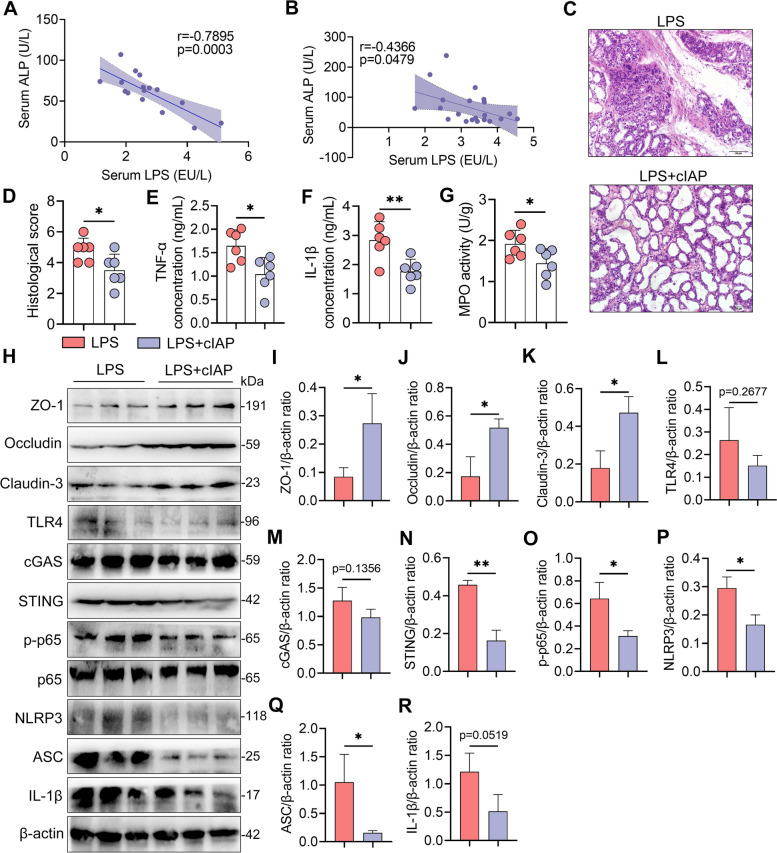Fig. 8.
Gut dysbiosis-derived reduction in alkaline phosphatase (ALP) facilitates low-grade LPS exposure-induced mastitis in mice. A, B Correlation analysis showing that the serum LPS concentration is negatively correlated with serum the ALP level in cows (A) and mice (B). C–G Calf intestinal alkaline phosphatase (cIAP) alleviates recurrent LPS exposure-induced mastitis (n = 6). Mice were treated with or without cIAP (20 U/mL) for 10 days during LPS treatment (20 μg/mouse), and then the mammary glands were harvested. C Representative mammary H&E-stained sections from differently treated mice (scale bar, 50 μm). D Histological scores of the mammary gland from the indicated mice. E–G Mammary TNF-α (E), IL-1β (F), and MPO activities (G) in the different groups were assessed (n = 6). H Representative western blot images of tight junction and TLR4-cGAS-STING-NF-κB/NLRP3 pathway proteins in the mammary tissues from differently treated mice. I–R The relative intensities of ZO-1, occludin, claudin-3, TLR4, cGAS, STING, p-p65, NLRP3, ASC, and IL-1β in the mammary gland were determined (n = 3). Data are expressed as the mean ± SD (D–G, I–R), and one-way ANOVA was performed followed by Tukey’s test (D–G, I–R). *p < 0.05, **p < 0.01 indicate significance

